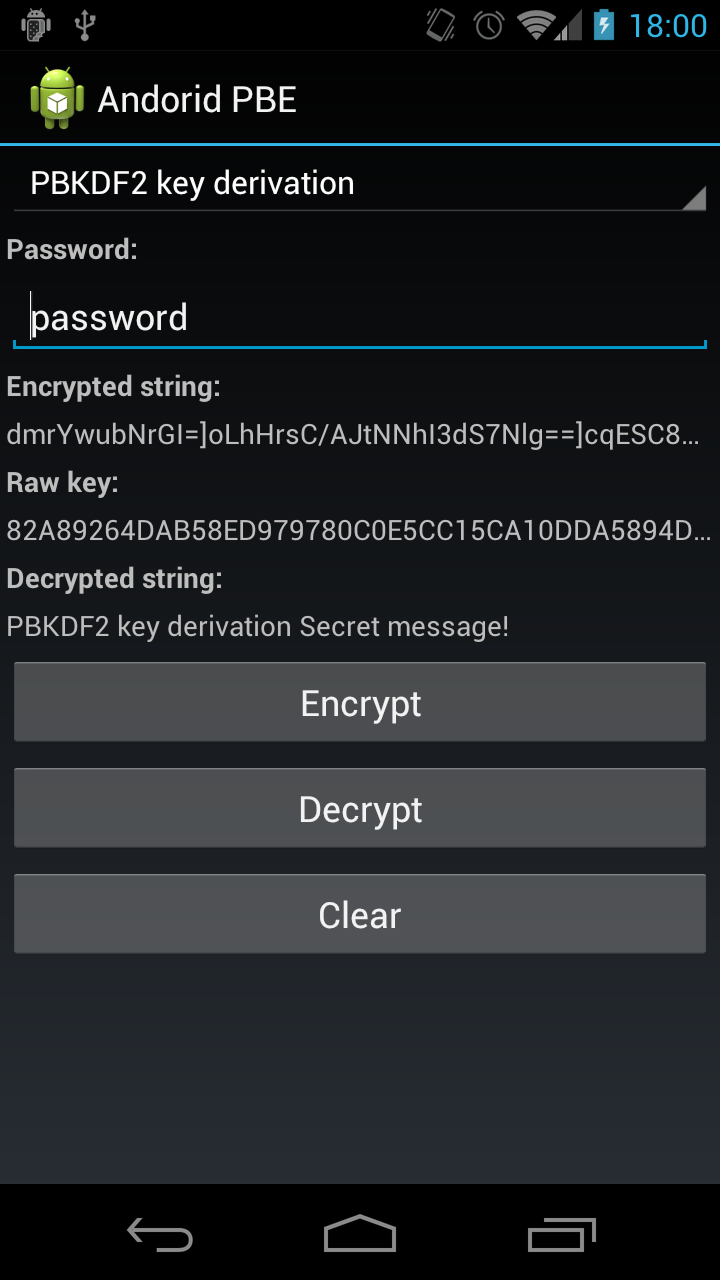Information!

AES encryption decryption online tool which performs encryption or decryption of an input data based on the given modes (ECB, CBC, CFB or OFB) and key bit sizes (128, 192 or 256 bits) using AES algorithm.
The encryption/decryption with a cipher key of 128, 192, or 256 bits is denoted as AES-128, AES-192, AES-256 respectively.

AES (acronym of Advanced Encryption Standard) is a symmetric encryption algorithm. The algorithm was developed by two Belgian cryptographer Joan Daemen and Vincent Rijmen. AES was designed to be efficient in both hardware and software, and supports a block length of 128 bits and key lengths of 128, 192, and 256 bits. AES 128, with a random Initialization Vector and PBKDF2 for key. Result is encoded in Base64. No effective cryptanalysis of AES cipher is known to date, it's officially recommended by many security agencies (including NSA). Key generator This page generates a wide range of encryption keys based on a pass phrase. Passphrase: aes-128-cbc: aes-128-cfb: aes-128-cfb1: aes-128-cfb8. AES Example - Round 1, Substitution Bytes current State Matrix is 0 B B @ 00 3C6E 47 1F 4E 22 74 0E 08 1B 31 54 59 0B1A 1 C C A substitute each entry (byte) of current state matrix by corresponding entry in AES S-Box for instance: byte 6E is substituted by entry of S-Box in row 6 and column E, i.e., by 9F this leads to new State Matrix 0 B B. The given master key is stretched and expanded by PKBDF2-HMAC (SHA256) usingthe salt from 1), to generate the AES key, HMAC key and IV (initializationvector for CBC). The given message is encrypted with AES-128 using the AES key and IV fromstep 2), in CBC mode and PKCS#7 padding.
AES Summary:
| Name | Description |
|---|---|
| Block size | 128 bits |
| key sizes | 128, 192, 256 bits |
| Rounds | 10, 12 or 14 (depending on key size) |
| Design principle | Substitution–permutation network |
| Modes |
|
| Designers | Vincent Rijmen, Joan Daemen |
| Also, known for |
|
What is AES Encryption?
The Advanced Encryption Standard (AES) is a block cipher that encrypts a 128-bit block (plaintext) to a 128-bit block (ciphertext), or decrypts a 128-bit block (ciphertext) to a 128-bit block (plaintext).
What is AES encryption/decryption flow?
AES encryption/decryption flows consists a back-to-back sequence of AES transformations, operating on a 128-bit State (data) and a round key. The flows depend on the cipher key length, where total transformation steps for encryption/decryption as follows -
- AES-128 : 40 steps
- AES-192 : 48 steps
- AES-256 : 56 steps
Refer following encryption pseudo code -
Note -
- It is assumed that the 10, 12, or 14 round keys are already derived (expanded) from the 'cipher key' and stored in
round_key_encrypt[] round_key_encrypt[0]stores the first 128 bits of the 'cipher key', which is used for the first XOR operation (aka round 0).
Similarly for decryption - follow 'Inverse Cipher', where steps reversed along with invert operations e.g. invSubButes(tmp), invShiftRows(tmp), invMixColumns(tmp)
Code/API references:
Developer Tool-kit is a set of online developer tools that help get the results of various functionality on-the-fly and diagnose.
Various tools:
Other info:

- Audience Type: Software developers and users
- Abstract: Online Utility Tools
- Version: v8.0.4
- Date published: 2020-07-14
- Date modified: 2021-04-19
- Publisher: Rajendra Varma
- Author: Rajendra Varma
Aes 128 Cbc Key Generator For Sale
Note - Since none of the user information does get stored on server, it is safe to use these tools